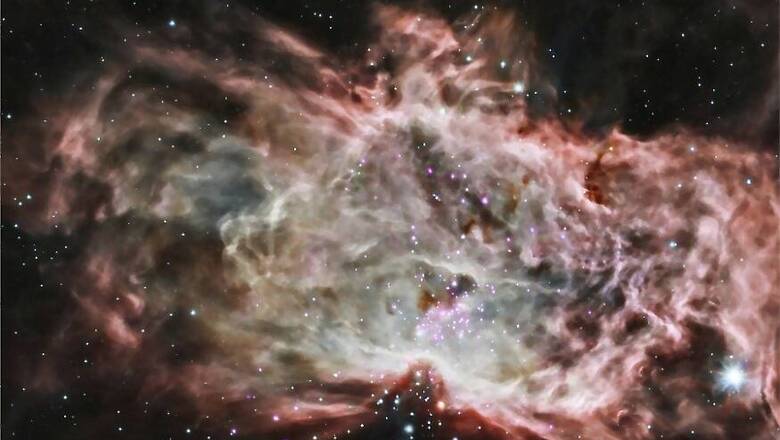
views
There is a very powerful radio signal that is doing rounds in our galaxy, and astronomers are perplexed because this is the first ever fast radio burst (FRB) originating in our own galaxy. And this has happened as recently as April 28, when SGR 1935+2154, a dead star that is around 30,000 light-years away from earth, registered for the radio observatories around the world with a single and millisecond-long burst of incredibly bright radio waves. Astronomers say this radio signal is so powerful, it is possible it can also be detected in nearby galaxies.
The activity on the SGR 1935+2154 was registered by the Swift Burst Alert Telescope, the AGILE satellite and the NICER ISS payload. “The burst had a double-peak structure with two components ~5 ms wide separated by ~30 ms (see URL below). The spectra of the two components show differing band-limited structure, which we caution are not corrected for the telescope sidelobe response or instrumental bandpass. However, we do not expect the telescope's spectral response to change significantly on a timescale of 30 ms (the separation of the two bursts), which suggests that the two peaks indeed had different spectra. There is clear evidence for a scattering tail of similar magnitude in the two peaks,” The Astronomer’s Telegram had reported its findings.
“Something like this has never been seen before,” Shrinivas Kulkarni, astronomer at Caltech, told ScienceAlert. The consensus seems to be on the fact that this FRB signal may have originated as a result of massive, shifting gravitational forces causing a starquake or magnetar flare, that caused a disturbance in the magnetic field surrounding it. As gravitational force tries to keep the star together - an inward force - the magnetic field is so powerful, it distorts the star's shape. This leads to an ongoing tension between the two forces, which occasionally produces gargantuan starquakes and giant magnetar flares, Kulkarni explains to ScienceAlert. Astronomers believe that a magnetar can possibly produce even larger outbursts. The SGR 1935+2154's burst did not require much energy, they say, for a magnetar and the star could easily handle a burst a thousand times stronger.
At this time, astronomers are still observing the source of this signal for any follow-signals, which could indicate further activity on the SGR 1935+2154.



















Comments
0 comment